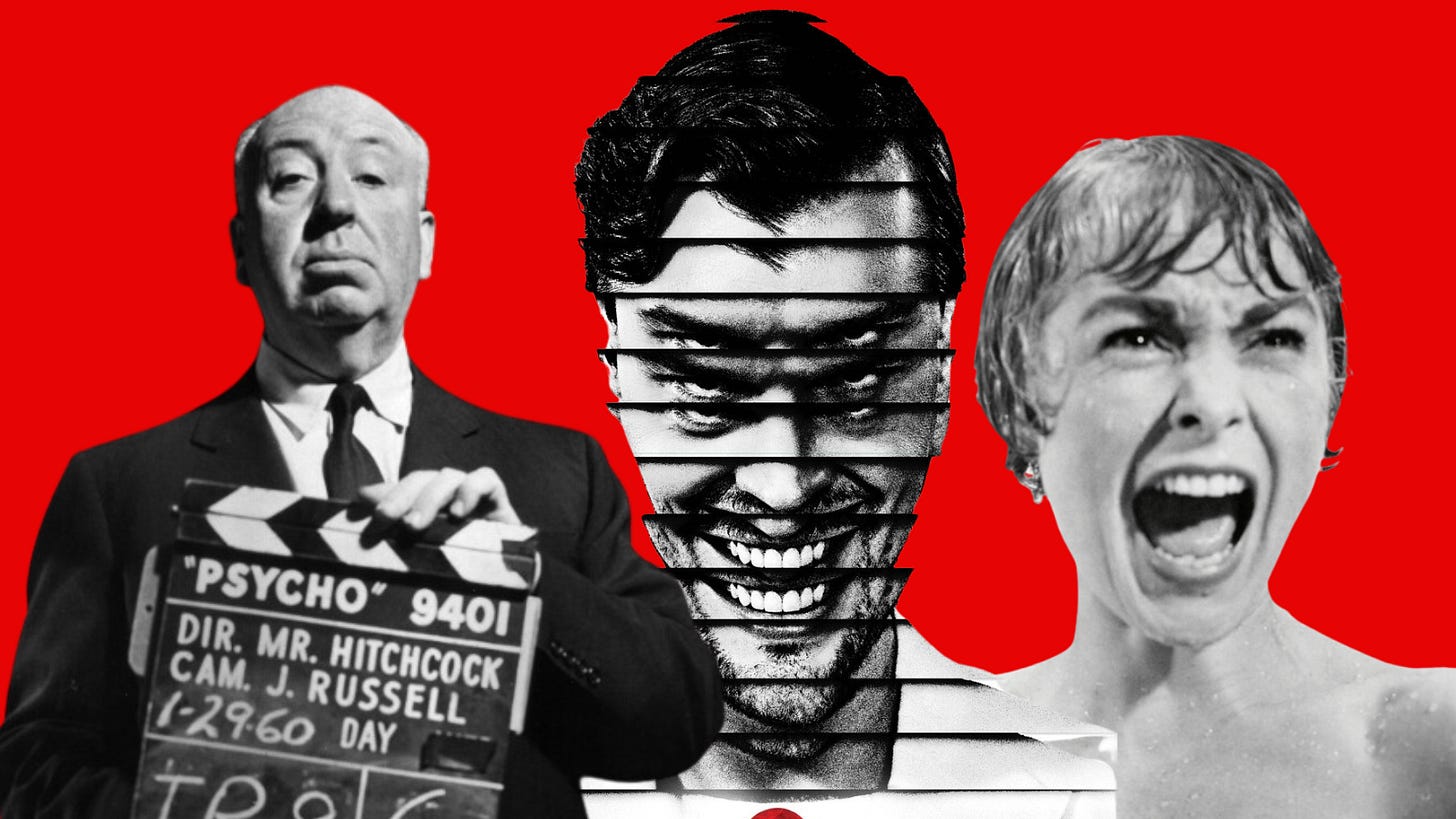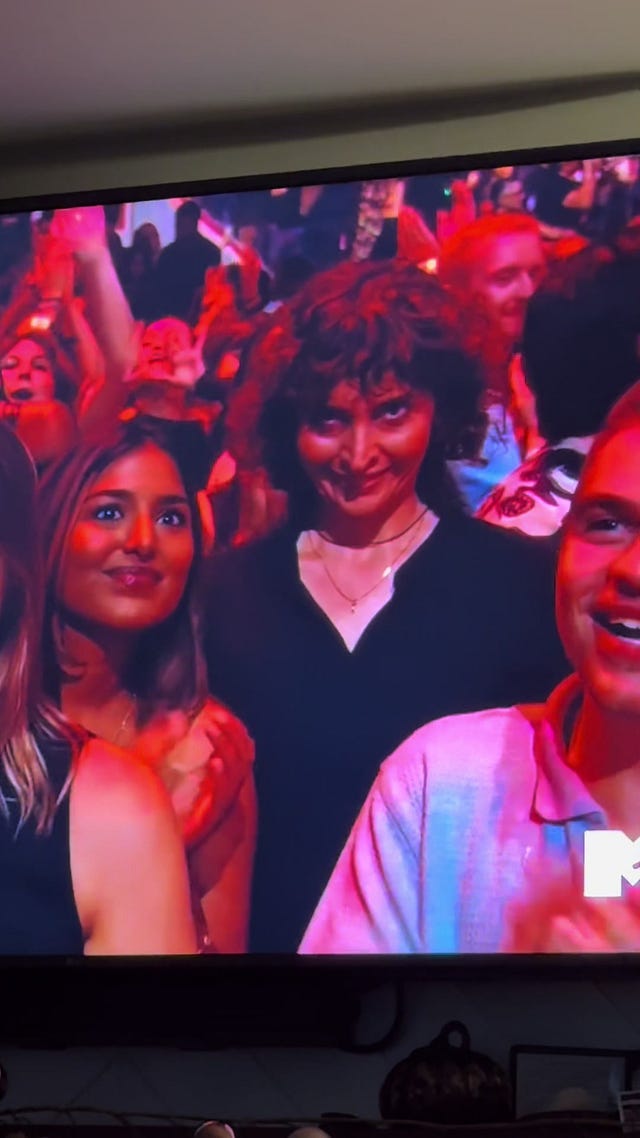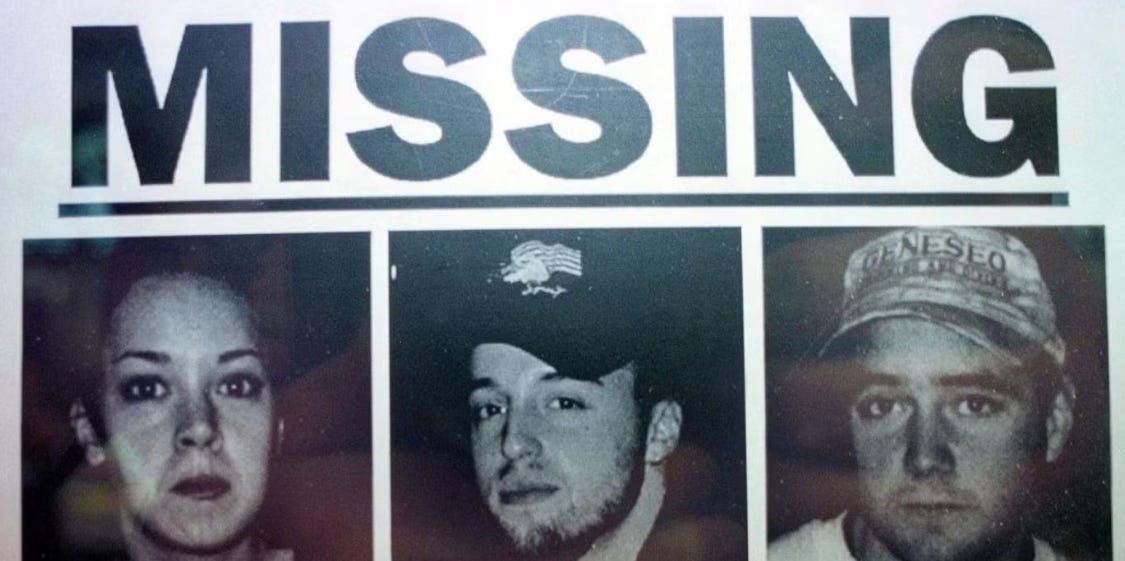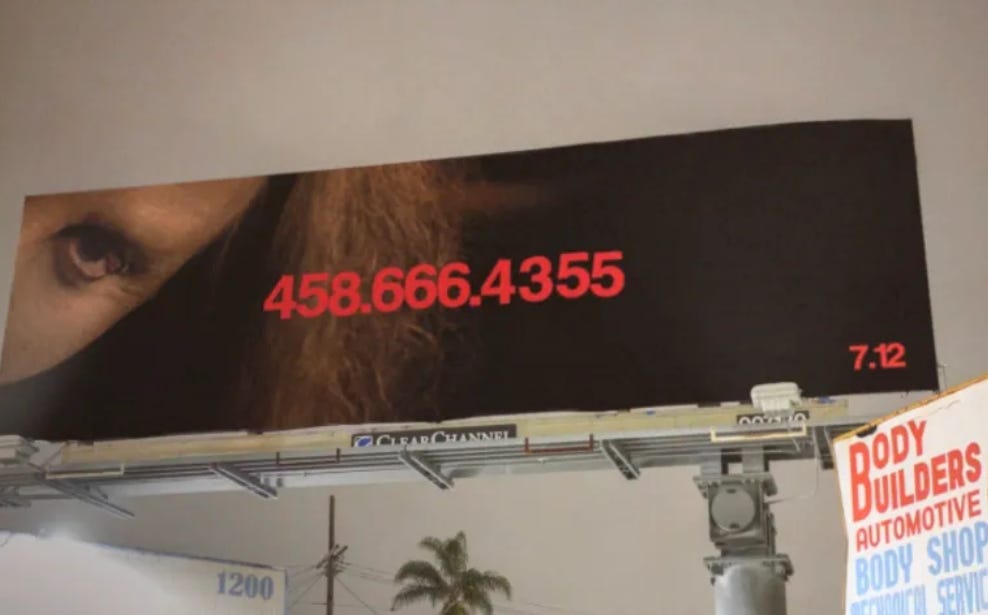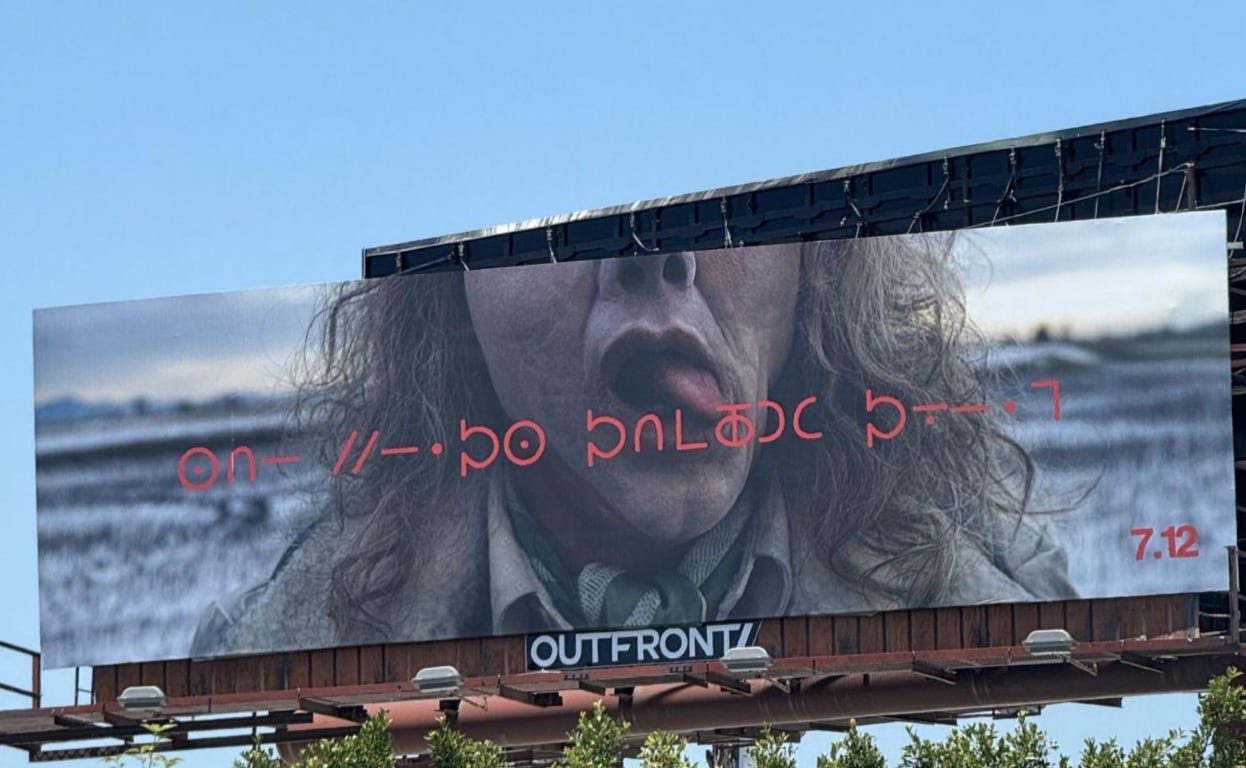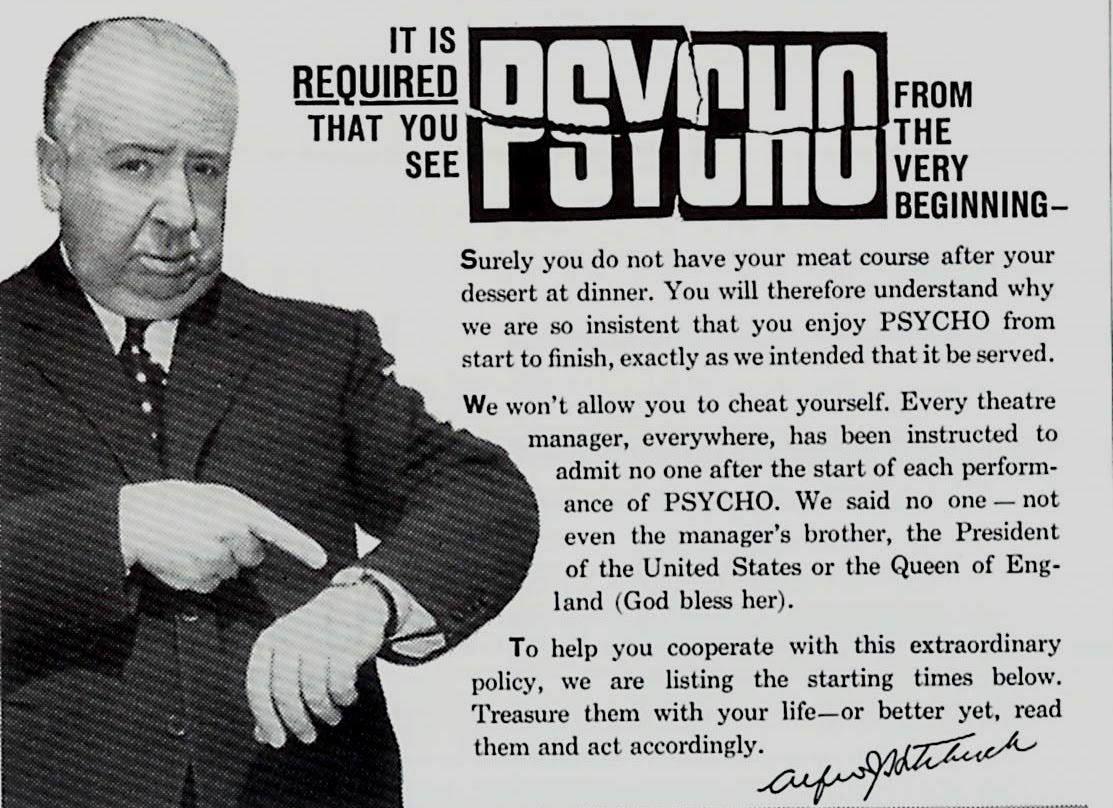#8 Brands in Brief: the best in horror movie marketing
Plus, an exclusive interview with Asos on its new creative direction
Here’s a fun fact about me: I’m obsessed with horror movies and love catching them in cinemas. Just last weekend, I saw Smile 2, which reminded me of all the clever stunts the marketing team pulled for the sequel's promotion. Remember the creepy audience members during the MTV VMAs?
With Halloween just around the corner, I thought it’d be the perfect time to dive into some of my favorite horror marketing campaigns to set the mood for the spooky season.
But don’t worry—if jump scares, ghosts and ghouls aren’t your thing, there’s plenty more in store. I’m also excited to share my exclusive interview with Asos about its new brand positioning, plus a personal chat with VML’s UK chief creative officer, Ryan McManus, on his career and some of the standout ads he’s made along the way.
5 of the best horror movie marketing stunts of all time
Smile 2 (2024)
 Tiktok failed to load.
Tiktok failed to load.Enable 3rd party cookies or use another browser
Back in September during the MTV VMAs, viewers at home noticed an unsettling addition to the audience—a strange woman smiling directly into the camera. Creepy, right? On the surface, it was a brilliant way to build momentum for the movie, but when you look a little deeper and realize the plot centers around a super-famous pop singer, it all clicks.
The Blair Witch Project (1999)
An oldie but a true classic! I remember watching this film as a 10-year-old and being terrified out of my wits. The marketing for this '90s gem is still talked about today—and for good reason.
The movie tells the chilling tale of the Blair Witch, an urban legend haunting the woods outside a remote suburban town in Maryland. Three student filmmakers embark on a mission to capture footage and prove the witch’s existence. However, when they go missing, all that remains is their recorded footage, discovered a year later, which supposedly became the foundation for the film.
Adding to the mystery, theater-goers received missing persons posters as they left the cinema, directing them to a DIY-style website. The marketing team engaged with fans on forums and chat rooms, even posing as group members to stir up questions about the film's validity. Remember, this was 1999 when the internet was still in its infancy.
What made this stunt so effective was its grassroots approach and sheer believability. It definitely wouldn’t have the same impact in today’s hyper-digital world, which makes it all the more nostalgic.
Longlegs (2024)
Longlegs, directed by Osgood Perkins and starring Nicolas Cage, quickly generated significant interest with its cryptic billboards. The marketing team at Neon executed a masterclass in maintaining the authenticity of the movie's tone, visuals, and premise throughout its promotional campaigns.
These two billboards exemplify this approach perfectly. The first offers a glimpse of Cage’s character alongside a mysterious number, but not much else. When you called that number, Cage answered in a creepy whisper. The second billboard features a series of symbols that, if you’ve seen the film, are a recurring motif. When deciphered, these symbols led users to a website that revealed more disturbing details about the movie.
Psycho (1960)
Many people believe that The Blair Witch Project marked the beginning horror movie marketing but, actually, Alfred Hitchcock was onto this decades before.
When the cult classic Pyscho was released, the iconic director went all out and according to rumor, did it mostly by himself. For the movie premier, he created a “real” manual for the audience, warning them about potential health risks, including the possibility of a heart attack from watching the film.
To heighten the suspense, Hitchcock also hired nurses to stand outside the theaters, ready to assist anyone who might experience ill health during the screening.
The Master of Suspense was also keen on cinema-goers being punctual to the viewings. If you entered the theater to see the film, you weren’t allowed to leave, and if you arrived even five minutes late, you couldn’t get in at all. Hitchcock believed that walking in just ten minutes late would diminish the shock of the ending.
Paranormal Activity (2007)
The marketing campaign for Paranormal Activity is notable for its use of the internet and how it changed the game when it came to putting the demand for horror movies into the hands of fans.
The ‘Demand It!’ campaign was designed to maximize the potential of the movie’s distribution plan. A website was launched where fans could vote for it to be screened in their local theaters. This approach ensured that the film would be distributed to and shown in the cinemas across the US that received the most votes.
Advertising
Inside The Or’s inaugural work for Asos
Asos has launched its new brand campaign, ‘Inspired By,’ with The Or as its creative agency, aiming to position itself as both a curator and trendsetter in the fashion industry. The campaign features a captivating ad that follows an “Asos eye,” searching for inspiration in unexpected places—such as a yearbook at a car boot sale and a chandelier at a dinner party—all set to a nostalgic soundtrack by The Streets.
Creative partner Charlene Chandrasekaran emphasized the importance of authenticity in the ad, ensuring it felt distinct from typical advertising and truly representative of the Asos brand.
The long-term goal of this campaign is to establish Asos as the go-to destination for diverse fashion trends while reflecting the vibrant energy of its team. Dan Elton, the brand’s executive vice president of customer and marketing, noted a dissonance between how employees feel internally and how the brand has been presented in recent years.
He highlighted Asos's heritage, rooted in fashion discovery since its inception in 2000, and how the brand aims to adapt its identity to modern trends while maintaining its core values.
The campaign signifies a blend of nostalgia and contemporary relevance, further enhanced by the choice of music that resonates with both Asos’s history and its future direction.
VML’s Ryan McManus on how a social impact project changed the course of his career
Ryan McManus, the UK chief creative officer at VML, reflects on his two-decade career in advertising, beginning with his childhood in South Africa.
Growing up in a creative environment influenced by his architect father and schoolteacher mother, McManus initially explored his artistic talents through drawing.
His interest in advertising was sparked during a school assembly showcasing humorous ads from around the world, leading him to pursue a formal education at an advertising school in Cape Town. There, he developed his conceptual skills and secured his first job at FCB after sticking to his creative vision despite criticism from his tutor.
Throughout his career, McManus has worked at notable agencies like JWT and Havas, contributing to impactful projects such as Join the Pipe, which promotes drinking tap water to reduce plastic waste.
He has also created notable campaigns for brands like Sony Ericsson and Absolut Vodka, blending culture and advertising to drive sales.
More recently, he produced innovative work for Virgin Voyages featuring an AI version of Jennifer Lopez. On working with the Jenny from the Block singer he said: “It was pretty awkward when I was trying to do accents to her, to get her to do different accents and to behave like a pirate in one scene,”
“And I remember sort of catching myself doing a pirate voice to Jennifer Lopez in front of me and just going, like, what am I doing? This is so embarrassing. Like, what am I actually doing?”
Now in his role at VML, McManus feels a growing momentum within the agency and looks forward to continuing to push creative boundaries.




